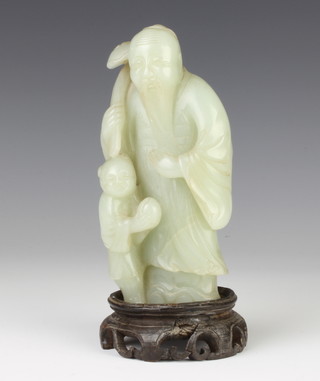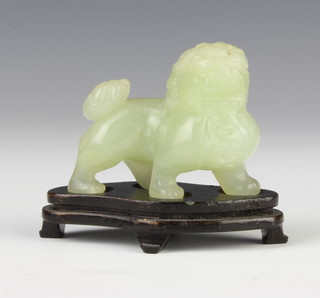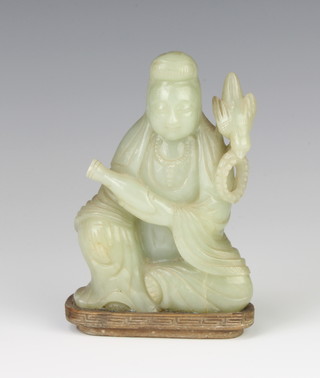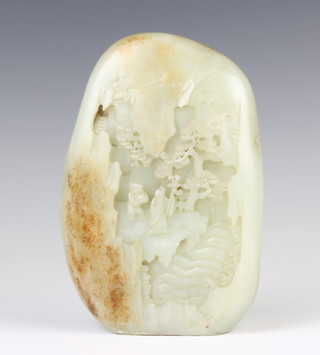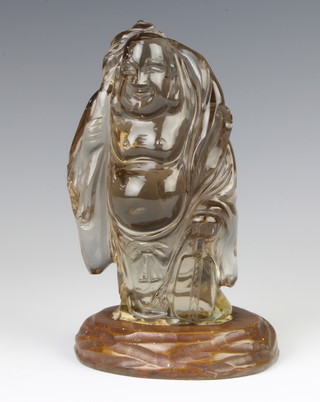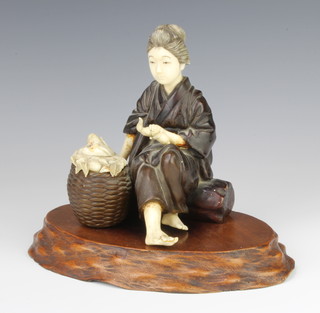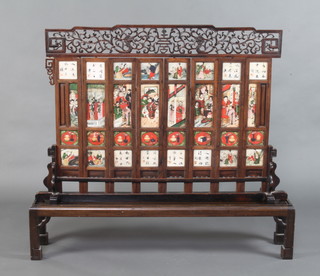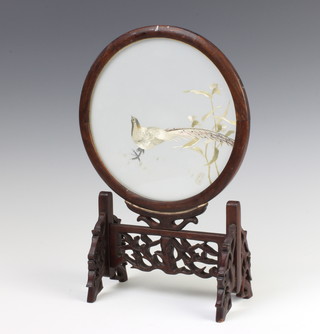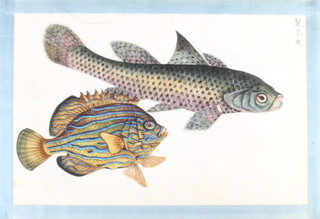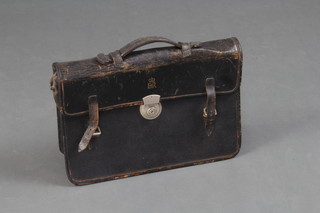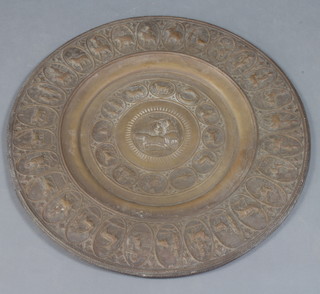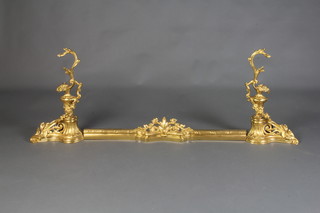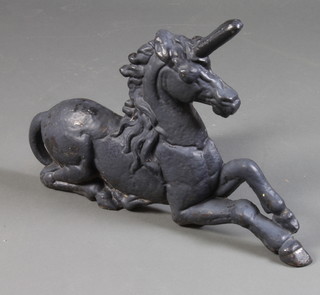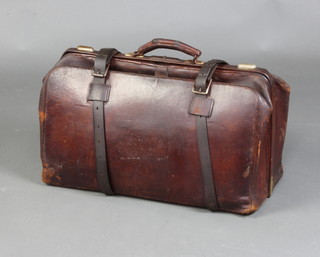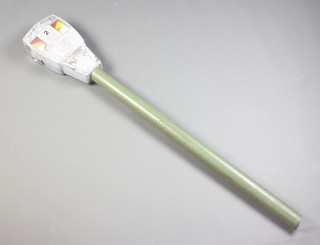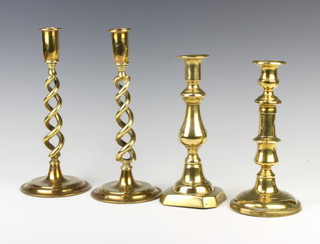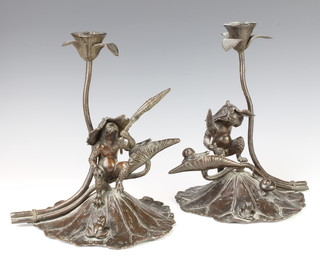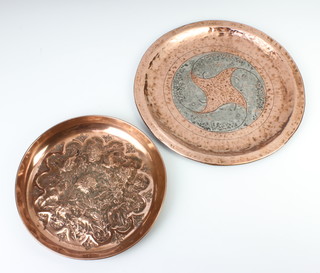Catalogue for our Antique, Fine Art and Collectables auction held on Wednesday 23rd of October 2019
Auction Categories
Viewing 1
7 categories viewing : Entire Catalogue
7 categories viewing : Entire Catalogue
description ( and estimated value in GBP )
126
A jade figure of Shou Lao, c1900, the figure in grey-green stone standing holding a ru-i sceptre above a boy with a peach, 15cmsold for £3400
127
A jade figure of a Buddhist lion 5.5cmsold for £70
128
A jade figure of Guan Yin, c.1900, seated and carved in the grey-green stone holding the Vase of the Essence of Life, a bird swooping with a rosary above her shoulder, 10.5cmsold for £1050
129
An early 20th Century small ivory table screen, almost square and carved in relief with a fisherman on a riverbank amazed at an immortal and maiden in the clouds, 9.8cm, with original carved hardwood stand, combined height 18cm130
A 19th/20th Century jade boulder carving, the pale grey-green stone with amber inclusions carved with small figures of Shou Lao with his staff and a boy carrying his peach approaching a river under a mountain overhang and pines, two bats flying above, 19.5cm with standsold for £9000
131
A 20th Century Chinese carving of Budai, the God standing with staff and huge bag in grey-tinted translucent glass or quartz, 14cm, with stand132
A Japanese Meiji period bronze and ivory mounted figure of a girl sitting on a trunk with a basket before her containing carved ivory fruit, signed, 14cm, on a wood stand133
A mid 19th Century painted marble screen, formed of numerous white tablets with brightly coloured dignitaries and ladies between women and children, inscriptions and precious objects, the reverse with rocky landscapes and flowers, all mounted in hardwood framing surmounted by a carved and pierced crest of Shou and Chilong and on a long stand, 66cm h x 109 cm w134
A second half of the 19th Century soapstone table screen, the chocolate-coloured stone carved with four houses built on rocks by a lake under pine trees and with details including a farmer with a buffalo, others in a rice field, mountains in the distance isolated in toffee-coloured inclusions, signed on the reverse 33.5cm x 26.5cm contained in a carved hardwood stand total height 50cmsold for £1250
135
An unusual Mandarin palette porcelain Brush-washer or Cache-pot, c.1770, the slightly-flared body with panels of figures reserved on iron-red under a black diaper ground, 15cm, carved wood stand (2)sold for £320
136
A Chinese silk work circular embroidery of an exotic bird contained in a circular hardwood frame and stand 34cmsold for £46
137
A book of 12 Chinese rice paper paintings of fish, each signed 17cm by 28cmsold for £3100
151
A carved wooden Maori Kotiate short hand club, "liver cutter" measuring 35 cm long x 13cm wide. The reke (butt) of the handle a carved tiki with inset paua (abalone) eyes. At the base of the carved tiki a hole with possible original harakeke (flax) string. The body of the club is carved in the rauponga pattern making the origin likely to be the Waipu Valley on the North East Coast of New Zealand. The pattern consists in each quarter a row of dog-tooth notches (pakati) on each side of which are parallel grooves (haehae) and ridges (raumoa). The club body is inset 3 paua (abalone) shells. The club is identically carved each side and inset a total of eight shells.sold for £500
153
An Elizabeth II black leather Civil Service issue briefcase, interior marked Telegraphs PI 29cm x 41cm x 10cmsold for £10
155
An Eastern embossed brass charger decorated a chariot scene and signs of the zodiac surrounded by 28 oval panels decorated figures and animals 62cm156
An Art Nouveau wrought iron and mesh spark guard 66cm h x 92cm w x 21cmsold for £42
157
A French Rococo 19th Century style gilt metal fire curb incorporating 2 end urns 56cm h x 139cm w x 15cm d158
A Victorian cast iron boot scraper in the form of a seated unicorn 41cm h x 60cm w x 30cm dsold for £44
159
A brown leather Gladstone bag 30cm h x 60cm w x 27cm dsold for £42
160
A 1980's Worthing Borough Council double sided parking meter 140cm h x 19cm x 10cmsold for £65
161
A pair of 19th Century brass spiral turned candlesticks together with 2 other 19th Century brass candlestickssold for £32
162
Arthur Neadon, a bronzed figure of a standing race horse by a tree, 25cm h x 25cm w x 14cm dsold for £48
163
A Japanese inlaid marquetry cabinet, the upper section with tambour shutter revealing 2 long drawers (1f), the base fitted 1 long drawer 23cm x 24cm x 10cmsold for £55
164
A pair of 19th Century Japanese bronze candlesticks in the form of the water imp Kappa on lily pads with seated toads and snails 28cm h x 20cmsold for £480
165
A circular Newlyn style planished copper dish decorated fish 28cm diam. together with a circular embossed copper bowl with bird and floral decoration 22cm diam.sold for £26
